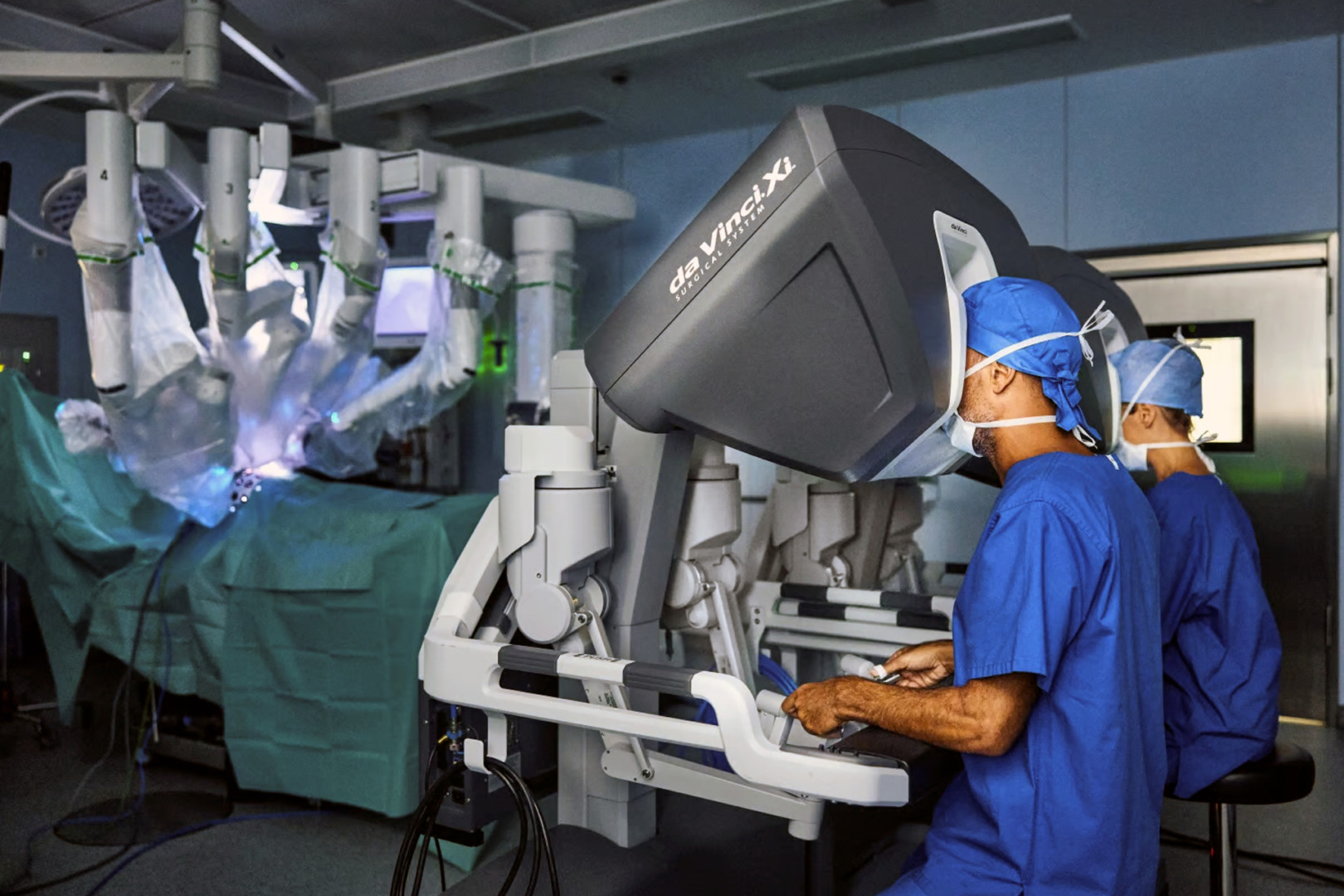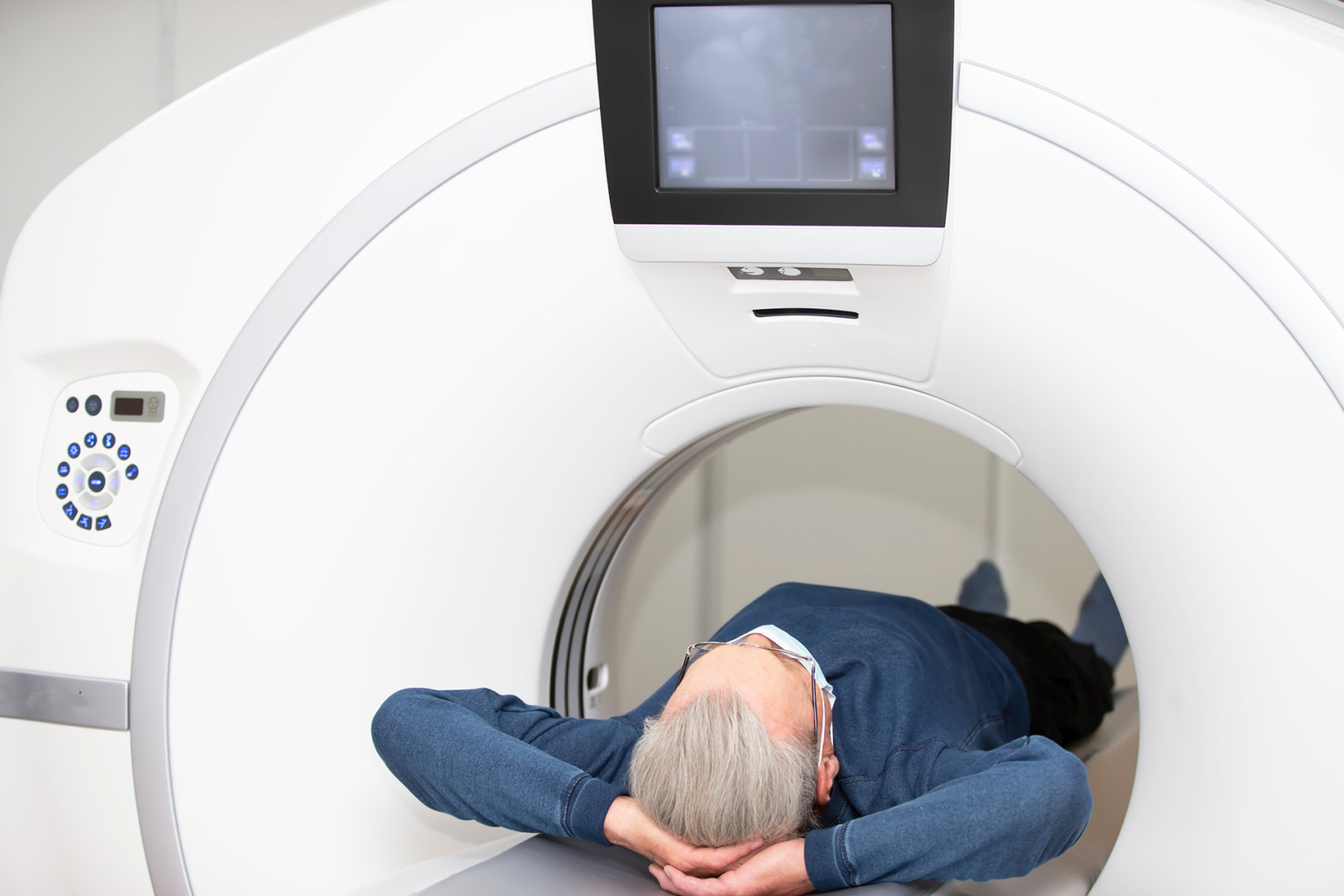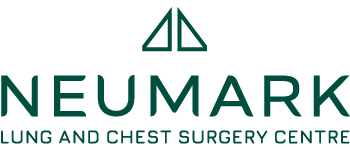Significant advancements and treatment options
Things have changed a lot with lung cancer. We used to think of it as a death sentence, but thanks to significant advancements in treatment options, outlooks are more hopeful. Medical technology continues to grow, with robotic-assisted and video-assisted thoracic surgeries as just some examples. We’re becoming more optimistic about a diagnosis, even though we know a difficult path lies ahead.
The best thing we can do for lung cancer is detect it early. When caught in its early stages, the 5-year relative survival rate for non-small cell lung cancer (NSCLC) jumps to 64%, a stark contrast to the 21% rate for all stages combined. Regular check-ups and screenings are the best way to help catch lung cancer early, especially for high-risk individuals such as smokers, or those with a family history of the disease.
VATS and RATS as minimally invasive treatments
Surgery is still the primary treatment option for early-stage NSCLC. However, surgery today looks different from surgery a decade ago. Now, we have minimally invasive techniques like video-assisted thoracoscopic surgery (VATS) and robotic-assisted thoracic surgery (RATS) that have significantly reduced recovery time and improved patient outcomes. These advancements have made surgery a more viable option for patients who may have previously been deemed inoperable.

For more advanced stages of lung cancer, targeted therapies and immunotherapy are promising treatment options. Targeted therapies, which focus on specific genetic mutations, have shown remarkable success in slowing the growth of cancer cells. Immunotherapy, which harnesses the power of the immune system to attack cancer cells, has also demonstrated significant improvements in survival rates and quality of life.
It’s important to know what type of care you’re receiving and how they work in conjunction with other treatment options.
For patients with advanced lung cancer, a combination of chemotherapy, radiation therapy, and immunotherapy can help control the growth of the cancer and alleviate symptoms. Palliative care, which focuses on managing symptoms and improving quality of life, plays a large role in ensuring that patients receive comprehensive care throughout their treatment journey.
Early detection as proactive approach
“As a thoracic surgeon, I have seen firsthand the impact of early detection on patient outcomes. One patient who stands out in my mind was an older female nonsmoker who was diagnosed with early-stage NSCLC after a routine CT scan”, says Dr Harish Mithiran, director of Neumark Lung & Chest Surgery Centre. “Thanks to her proactive approach to healthcare, we were able to remove the tumour through VATS, and she has since made a full recovery. Her experience is a testament to the power of early detection and the importance of staying vigilant about one’s health.”

Even now, there are new developments in the study of lung cancer. For example, recent breakthroughs in liquid biopsies, which can detect genetic mutations through a simple blood test, hold great promise for early detection and personalised treatment. Other clinical trials are ongoing, exploring novel immunotherapies and targeted therapies, all of which can hopefully soon join the fight against lung cancer.
Dr Mithiran notes, “While lung cancer remains formidable, the advancements in treatment options and survival rates offer a message of hope to those affected by this disease. Medical progress in lung cancer treatment throughout the past decade is remarkable. We’re seeing patients who would have been given up on just a few years ago now living for years with a good quality of life. Early detection is key. If we catch lung cancer early, we can offer patients a real chance at a cure”.
The female nonsmoker patient’s story is a powerful reminder of the benefits of early detection. Had she not been proactive about her health, her outcome may have been very different. As we continue to push the boundaries of medical research, we must emphasise the importance of early detection and screening. By doing so, we can ensure that more patients have access to life-saving treatments and a chance at a full recovery.

